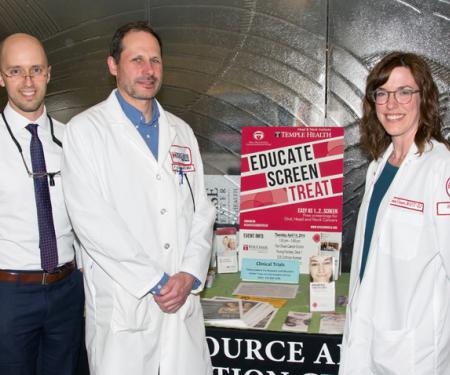Once a tumor has been identified, a biopsy is necessary to obtain a tissue sample, which is required in order to make a diagnosis and to determine the cancer staging. In a traditional core needle biopsy, a fine needle to collect a number of tissue samples, which are then examined for cell abnormalities that are a sign of cancer. Fox Chase radiologists specialize in performing image-guided biopsies. Using ultrasound, CT or MRI guidance, radiologists can sample even small lesions or lesions that are difficult to access by other means, as well as biopsies on patients with complicating medical factors. All biopsies performed at Fox Chase are minimally invasive.
Fox Chase has a thoughtful diagnostic approach with a focus on multidisciplinary evaluation to ensure that patients understand their diagnosis as well as their treatment options.
Some abnormalities may not be visible during a routine examination but can be seen using specialized cameras that let your doctor see defects deep in the nasal cavity, throat, voice box, or on the vocal cords. Often, these procedures may be done during the clinic visit without the need for a separate visit.
In order to diagnose and stage a tumor, multiple diagnostic studies may be performed
- CT and/or PET CT scan
- MRI
- Ultrasound
- Laryngoscopy
- Videostroboscopy
- Fine needle aspiration biopsy (Tissue is sampled with a small needle or taken directly from an abnormal growth)
Fox Chase radiologists and pathologists who specialize in head and neck cancer can diagnose the type and stage of head and neck cancer and determine whether it is invasive or non-invasive.








